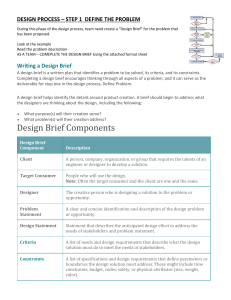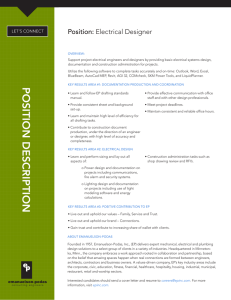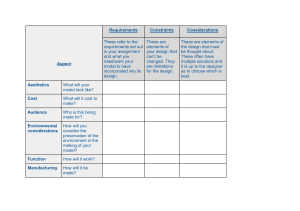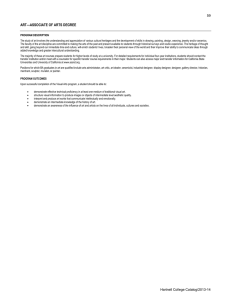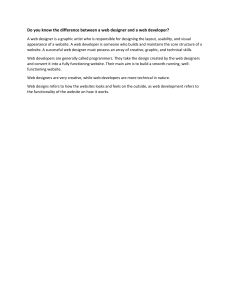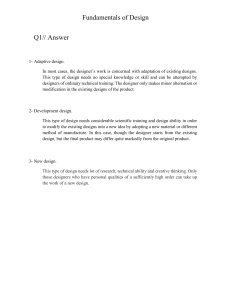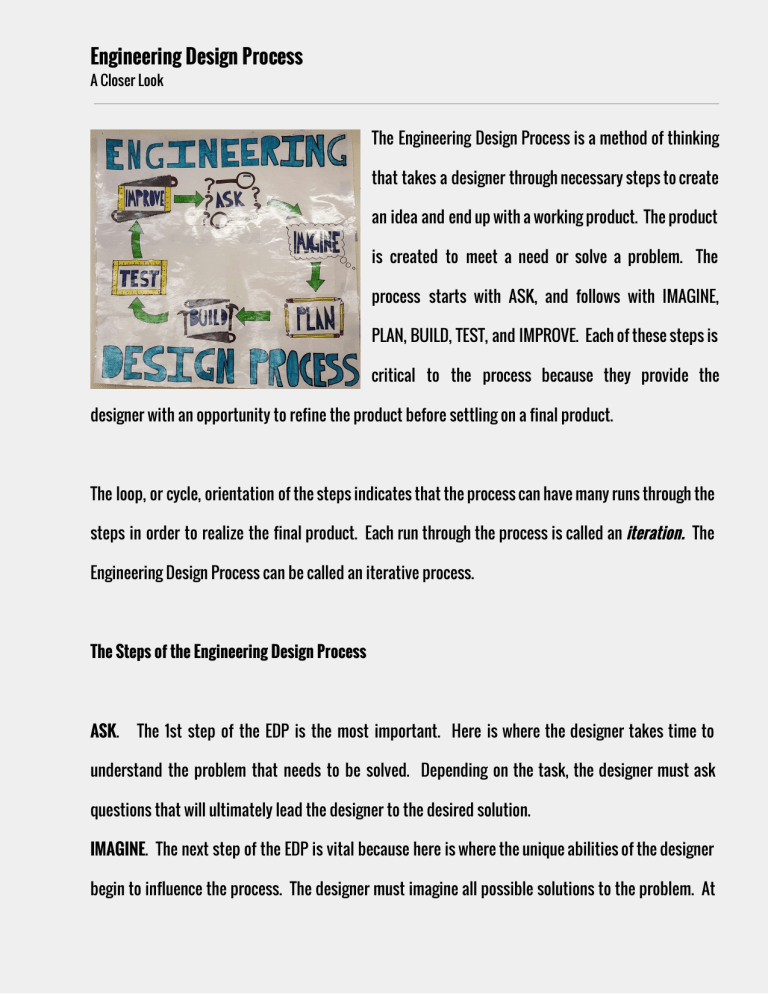
Engineering Design Process A Closer Look The Engineering Design Process is a method of thinking that takes a designer through necessary steps to create an idea and end up with a working product. The product is created to meet a need or solve a problem. The process starts with ASK, and follows with IMAGINE, PLAN, BUILD, TEST, and IMPROVE. Each of these steps is critical to the process because they provide the designer with an opportunity to refine the product before settling on a final product. The loop, or cycle, orientation of the steps indicates that the process can have many runs through the steps in order to realize the final product. Each run through the process is called an iteration. The Engineering Design Process can be called an iterative process. The Steps of the Engineering Design Process ASK . The 1st step of the EDP is the most important. Here is where the designer takes time to understand the problem that needs to be solved. Depending on the task, the designer must ask questions that will ultimately lead the designer to the desired solution. IMAGINE . The next step of the EDP is vital because here is where the unique abilities of the designer begin to influence the process. The designer must imagine all possible solutions to the problem. At this point, no idea is considered “wrong” or “bad” as long as the designer is informed about the starting point and the ending goal. PLAN . The next step of the EDP is important because the designer begins to think critically about the possible solutions. The solutions must fall within the scope of the project. Each project comes with a set of rules, or boundaries that must be followed. Engineers call these rules constraints. Common constraints include budget guidelines, geographical/physical space guidelines, and deadlines. The plan step often includes drawings, sketches, lists, spreadsheets, and presentations that show the plan of the designers to achieve the solution. BUILD . The next step of the EDP is where a solution begins to take form. A project will go under construction at this point strictly following the plan of the designers. Most of the time, engineers will start building models of the final product before they begin building the actual product. Each model that is built is called a prototype. TEST . The next step of the EDP is where a product is put to the test to see if it solves the problem and has the desired outcome. Engineers must put the product through rigorous and real-world testing to ensure success. IMPROVE . The next step of the EDP is where engineers must make a decision whether the solution has been fully met to the expectations of those who need it. If the product does not solve the problem, then the engineers must start the EDP over at the ASK step. The engineers must ask what steps need to be taken to improve the design. Remember: Every obstacle you encounter does NOT mean failure. It is another chance to improve and achieve success. Name:_________________________________________________________________________ Answer the following questions in complete sentences. Each question should be answered with approximately 2­4 sentences. Put your answers after each question. 1. What are the roles of an engineer? 2. What is something that you have used today that was designed by an engineer? What parts were designed by an engineer? 3. What are the benefits of working in an engineering team? 4. How does having constraints placed on a design affect the engineering process? 5. Why is making a model, or prototype, important in the design process? 6. What have you learned from the iterative process?
